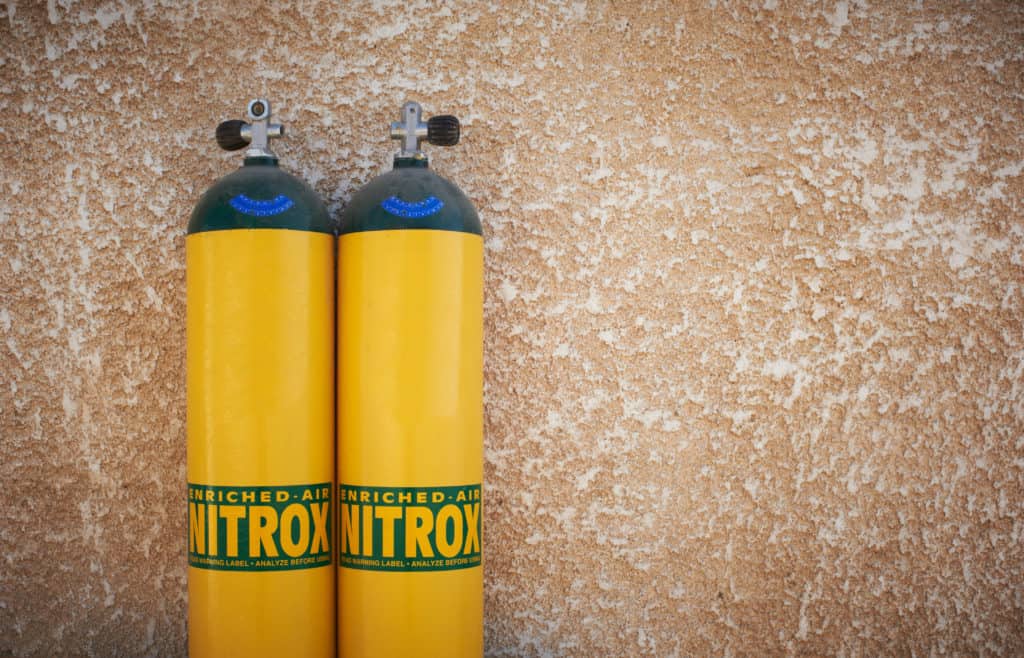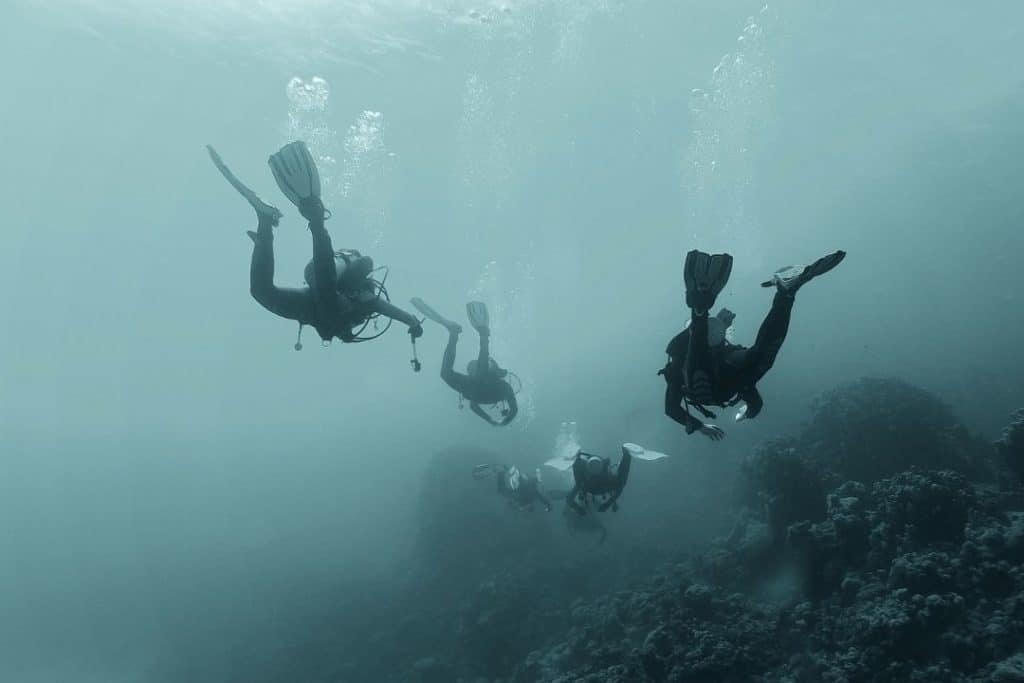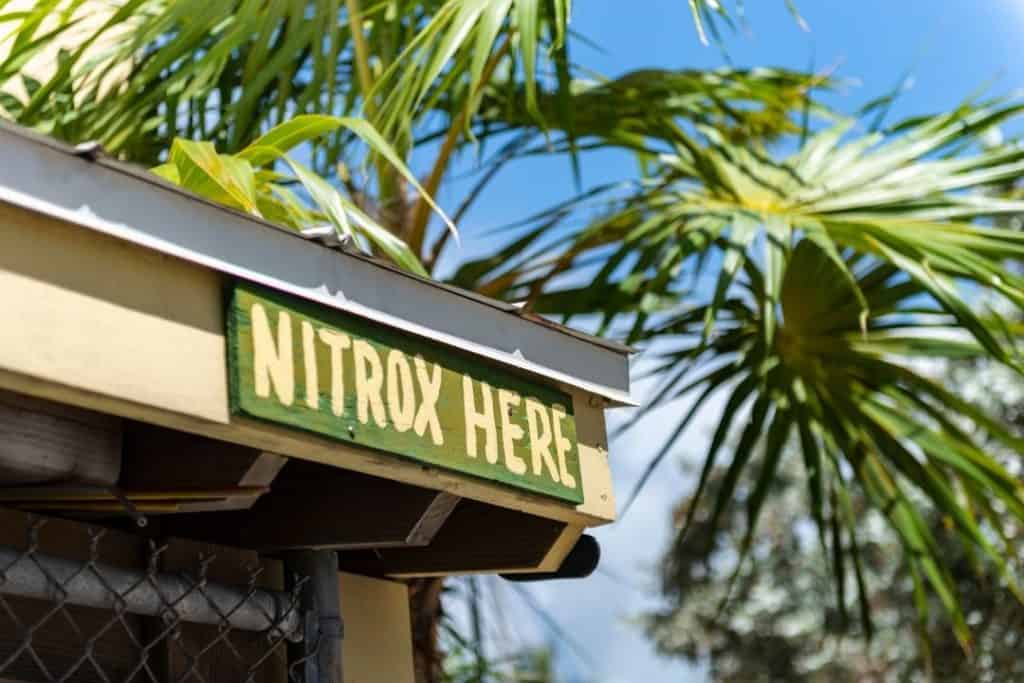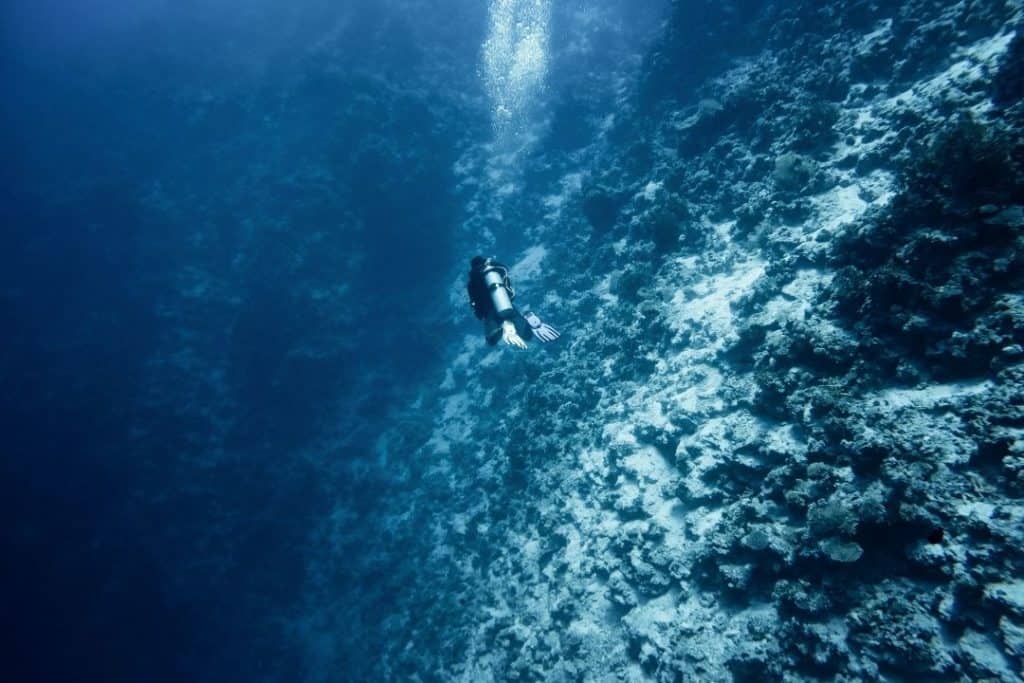Wondering what the yellow and green bands that say Nitrox or Enriched Air Nitrox on a scuba cylinder mean?
You might even notice that divers using those tanks have taken extra steps before assembling their gear. During the dive, when you are headed upwards to your safety stop, they seem to still have more bottom time left.
I will explain what Enriched Air Nitrox diving is about so you have a basic understanding of this outstanding tool for a better dive.
What is Enriched Air Nitrox (EAN) or just Nitrox, is a frequent question from new divers. The answer to that question is fairly simple, however, the reasons behind using it can use some explanations.
Enriched Air Nitrox is a breathing gas with a higher percentage of oxygen then normal air.
What is Nitrox?
A Nitrox tank is a dive cylinder filled with an EAN mixture, it has a higher percent of oxygen than what is found naturally in the air we normally breathe. The air we breathe has about 21% oxygen and 79% nitrogen, with a few traces of other gases. EAN-32 is a common blend of Nitrox. It has added oxygen to bring its percentage up to 32%.
That means that the nitrogen portion has been reduced to 68%. Since there is less nitrogen going into our lungs, there will be less available to go into our bloodstream as well. This change means that we have a different risk factor than the dive tables will show us using 21%.

Recreational divers who have been trained to use Nitrox can dive with an oxygen percentage as high as 40%.
However, the most common mixes are at 32% and 38%. The EAN training will teach the diver how to plan their dive to utilize the advantages of Nitrox and to guard against any possible negative impact.
Scuba Diving and Decompression Sickness
While Lloyd Bridges and Zale Parry, in the late 1950s, were enticing viewers of the television program,Sea Hunt, with the lure of scuba diving, it was a high risk activity. In the early days of recreational scuba diving, very little was known about the science that impacted our bodies while diving.
Decompression Sickness (DCS), also known as Caisson Disease or the Bends, was a known risk. It could cause moderate to severe pain, permanent disability or even death. There was enough evidence to understand that it was caused by nitrogen entering your blood under pressure.

It was also known, that slowly returning to surface pressure reduced your impact. However, there was little knowledge on how the processed worked and how to control the situation. Back then, it was not a question of would you get bent, it was more a question of how often and how bad.
Research and the development of the Navy dive tables led to a better understanding of DCS and how to reduce the risk. The dive tables provided guidance as to the maximum time one could spend at a specific depth before entering a high risk situation. The development of dive computers have also reduced the risk even further.
One of the major components of the classroom portion of the Open Water Diver certification course is dedicated to the understanding of DCS and how to manage the risk.
Today with proper training and risk management, scuba diving is a safe activity that can be enjoyed by the young and the old alike.
Why Enriched Air Nitrox Training Is Important

To use EAN on a dive you must be trained and certified in its use. There are no additional underwater skills to learn in order to become Nitrox certified.
However, there are additional tasks required while planning your dive and preparing your equipment.. It is even more important to follow the advice of “Plan your dive and dive your plan”.
The depth of your dive plan is always important, we use it to calculate our No Decompression Limit (NDL) time. When we are using an EAN mixture the ratio of oxygen and nitrogen is different from that of normal air and this causes an adjustment in the NDL times.
The higher the oxygen content the greater impact on the NDL. Special dive tables are available that illustrate the differences for common EAN percentages.
Divers using a Nitrox compatible dive computer will need to enter the percentage of oxygen used into the computer for a proper calculation of dive times and remaining NDL.
There is another depth related concern for Nitrox divers. This concern centers on the increase partial pressure of oxygen in our bodies. A high partial pressure of oxygen (PO2) in our bloodstream can become toxic.
Depth limits

This is the reason hospitals will not administer pure oxygen for long periods of time. As we dive deeper, the PO2 will increase. When we are diving with a scuba tank filled with compressed air (21% oxygen), our depth limit is guided by our certification level.
Open Water divers can dive to 60 feet (ca. 18 m), Advance Open Water divers to 100 feet (ca. 30 m) and Deep certified divers to 140 feet (ca. 43 m). At these depths, the PO2 are well within safe ranges.
However, when we are using a breathing gas with more oxygen the depth may be less than the certification level of the AOW and Deep diver.
Knowing exactly how much oxygen is in your dive cylinder is critical for a safe dive. EAN diver training includes how to analyze the content of your tank.
As a part of their diving planning and equipment set up, a diver will analyze the breathing gas percentage, record it and calculate the maximum depth the percentage is safe for. Once learned, these are simple task but still very critical for a safe dive.
Conclusion
There are a number of benefits to using Nitrox in your diving. However, not every dive will make use of the benefits. There are also some restrictions on its use, as well as a few equipment considerations.
This article is just an overview to cover, What Is Nitrox? Enriched Air Nitrox Diving Explained.
Other articles in this series, will go into more detail on the benefits of diving with an EAN mixture, answer how deep can you dive on Nitrox, and any equipment requirements. This series will show you why many divers swear by diving with Enriched Air Nitrox in many situations.
If you have any questions about EAN or like to share your experiences with it, feel free to leave a comment.


